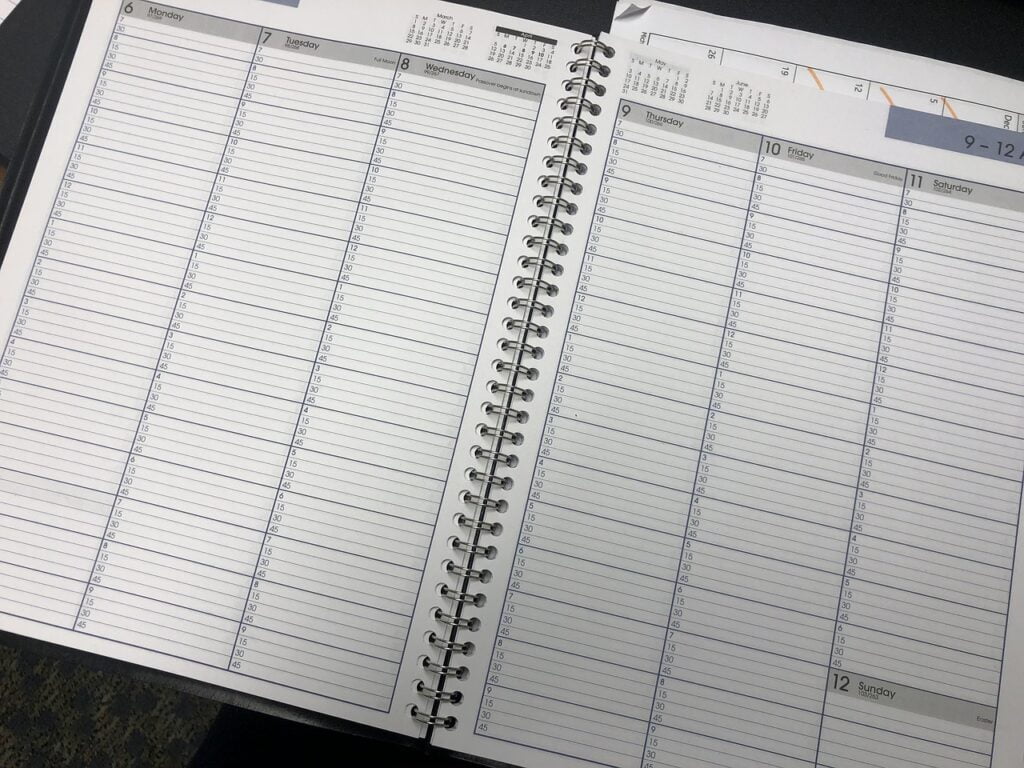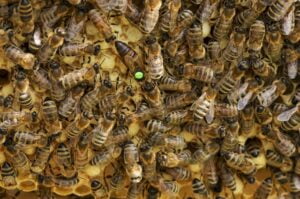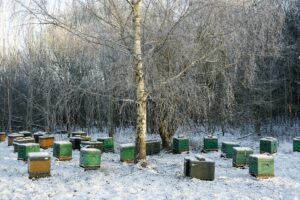Maintaining a successful apiary requires careful planning and diligent management throughout the year. This 12-month beekeeping schedule is designed to guide you through each season, focusing on crucial tasks like inspection, maintenance, and strategies to maximize honey production. By following this detailed schedule, you can ensure the health and productivity of your bee colonies, addressing their needs at every stage. Whether you’re a beginner or an experienced beekeeper, this guide will help you maintain strong, thriving hives all year long.

Table of Contents
January: Preparing Your Beekeeping Schedule for the Year Ahead
Inspect and Repair Equipment
During January, it’s essential to inspect all your beekeeping equipment. Check for any signs of wear and tear, and repair or replace items as needed. This includes hive bodies, frames, and protective clothing. Ensuring your tools are in top condition will help prevent problems when the beekeeping season begins. Take inventory of your supplies and order any replacements early to avoid shortages. Proper maintenance now will save you time and stress later in the year.
Plan Your Beekeeping Goals
Set clear goals for your beekeeping activities this year. Whether you want to expand your apiary, increase honey production, or focus on bee health, having specific objectives will guide your efforts. Create a timeline for achieving these goals, breaking them down into manageable tasks. This planning stage will help you stay organized and motivated throughout the year. Additionally, setting goals can help you measure your progress and success, making adjustments as necessary.
February: Early Preparations
Order New Bees and Supplies
Successfully Introducing a New Queen – 12 Key Strategies
If you plan to start new colonies or replace lost ones, February is the time to order bees. Research suppliers to find high-quality queens and bees suited to your climate. Also, stock up on necessary supplies like feeders, medications, and hive tools. Early ordering ensures you receive your bees in time for the spring buildup. This is also a good time to review your beekeeping records from the previous year to identify any patterns or issues that need addressing.
Attend Beekeeping Workshops
Many beekeeping associations offer workshops and seminars in February. These events provide valuable learning opportunities and allow you to network with other beekeepers. Attending a workshop can refresh your knowledge and introduce you to new techniques. It’s also a great time to ask experienced beekeepers for advice on any challenges you faced last year. Engaging with the beekeeping community can provide support and inspiration as you prepare for the upcoming season.
March: Hive Inspections and Maintenance
The Beehive Chronicles: 6 Types of Hives for Bee Keeping and Advanced Apiculture Practices

Conduct Initial Hive Inspections
As temperatures rise, start inspecting your hives. Look for signs of activity and ensure the queen is present and laying eggs. If you need help finding the queen read 10 Tips for Beekeepers Locating the Queen Bee During Hive Inspections. Check for any winter damage or pests, and take action to address any issues. Early inspections help you gauge the colony’s health and prepare for the spring buildup. Document your findings to track the health and progress of each hive, making note of any immediate actions needed.
Feed the Bees if Necessary
March can be a challenging month for bee colonies due to limited food sources. If your hives are light on stores, provide supplemental feeding. Use sugar syrup or fondant to boost their energy levels. Proper feeding ensures your bees have the strength to start building up their population for the coming nectar flow. Regular feeding checks will help you maintain strong, healthy colonies ready for the active season.
April: Spring Build-Up
Monitor Brood Development
During April, closely monitor brood development. A healthy queen should be laying eggs prolifically, and the brood pattern should be solid. Check for any signs of disease or pests and treat accordingly. Strong brood development in spring is crucial for a productive season. Keeping detailed records of brood patterns and health can help you identify and address issues promptly.
Manage Hive Space
As colonies grow, ensure they have enough space. Add additional brood boxes or supers as needed to prevent overcrowding. Overcrowded hives are prone to swarming, which can reduce your honey yield. Proper space management supports healthy colony growth and maximizes honey production. Regularly assessing and adjusting hive space helps keep your bees comfortable and productive.
May: Swarm Prevention and Management
Advanced Techniques in Apiculture: 10 Pro Tips for Beekeepers
Implement Swarm Control Measures
May is a peak month for swarming, so take proactive steps to prevent it. Regularly check for swarm cells and remove them if necessary. Consider splitting strong colonies to reduce swarming tendencies. Swarm prevention helps maintain colony strength and ensures a steady honey flow. Utilizing techniques such as adding supers or providing additional ventilation can also reduce the likelihood of swarming.
Ultimate Swarm Prevention Guide: 12 Proven Beekeeper Tips
Monitor for Pests and Diseases
With increased bee activity, May is also a critical time to monitor for pests and diseases. Perform routine inspections to detect Varroa mites, small hive beetles, and other threats. Early detection and treatment can save your colonies from severe damage. Maintain good hive hygiene to reduce the risk of infections spreading. Implementing an integrated pest management plan can help keep your colonies healthy and productive.

June: Peak Nectar Flow
Maximize Honey Production
June often marks the peak of the nectar flow. Ensure your hives are in optimal condition to take advantage of this period. Add more supers to give bees ample storage space for honey. Regularly check and harvest ripe honey to prevent overcrowding. Efficient management during the nectar flow maximizes your honey yield. Consider rotating supers to encourage bees to fill them more evenly and efficiently.
Ensure Adequate Ventilation
With warmer temperatures and increased bee activity, proper hive ventilation is crucial. Ensure your hives have adequate airflow to prevent overheating and moisture buildup. Good ventilation promotes a healthy environment for the bees and helps maintain the quality of the honey. Using screened bottom boards and adjustable hive entrances can help regulate temperature and airflow within the hive.
July: Mid-Summer Maintenance
Monitor Hive Conditions
Continue regular inspections to monitor hive conditions. Look for signs of queen health, brood pattern, and overall colony strength. Address any issues promptly to keep the hives healthy and productive. Consistent monitoring helps you stay ahead of potential problems. Keep detailed records of hive inspections to track progress and identify trends.
Manage Honey Harvest
July is typically a busy month for honey harvest. Extract honey from full supers and process it for storage or sale. Be mindful of leaving enough honey for the bees to sustain themselves. A successful harvest depends on careful timing and proper handling of the honey. Ensure that extracted honey is stored in a clean, dry place to maintain its quality and flavor.
August: Preparing for Fall
Treat for Varroa Mites

August is a critical time to treat for Varroa mites, which can weaken colonies heading into fall. Use appropriate treatments based on your local conditions and mite levels. Effective Varroa management ensures your bees are healthy and strong for the winter. Regular monitoring and treatment help keep mite populations under control. Consider alternating treatment methods to prevent mites from developing resistance.
Assess Colony Strength
Evaluate the strength of your colonies as summer winds down. Weak colonies may need to be combined with stronger ones to ensure survival. Ensure each hive has a healthy queen and enough bees to sustain the colony through winter. Strong, well-managed colonies are more likely to thrive in the colder months. Preparing now can help reduce winter losses and set your bees up for success in the spring.
September: Preparing for Winter
Consolidate and Feed Colonies
As temperatures start to drop, begin consolidating weaker colonies and ensuring all hives have sufficient food stores. Feed colonies if necessary to boost their winter reserves. Proper feeding and consolidation help ensure your bees have enough resources to survive the winter. Using internal feeders can help provide food without disrupting the hive’s temperature regulation.
Inspect and Repair Hives
September is also a good time to inspect and repair hives before winter sets in. Check for any structural damage and address it promptly. Ensure hive entrances are reduced to keep out pests and protect the colony from cold winds. Well-maintained hives are crucial for winter survival. Replacing or repairing damaged components now can prevent bigger issues during the winter months.
October: Winter Preparations
Install Winter Protection
Prepare your hives for winter by installing insulation and windbreaks. Ensure hive covers are secure and entrances are protected from snow and ice. Winter protection helps maintain a stable internal hive temperature, which is vital for the bees’ survival. Proper insulation and protection can make a significant difference in winter colony health. Consider using materials like foam boards or hay bales to provide additional insulation and wind protection. Check out A Beginner’s Guide to Winter Bee Hive Wraps: 6 Steps to Protect Your Bees.
Final Inspections
Conduct final inspections to ensure your hives are ready for winter. Check food stores, colony strength, and overall hive condition. Address any last-minute issues to give your bees the best chance of surviving the cold months. Thorough preparations in October set the stage for successful overwintering. Make sure to document your final inspections and any actions taken to reference in the spring.
November: Monitoring and Minimal Interventions
Monitor for Pests
Even in late fall, it’s important to keep an eye out for pests. Check for signs of mice and other intruders seeking shelter in the hives. Use entrance reducers and other methods to keep pests at bay. Regular monitoring helps prevent pest infestations during winter. Setting up mouse guards can prevent these rodents from entering and damaging the hives.
Minimal Hive Interventions
With colder temperatures, minimize hive interventions to avoid disturbing the bees. Only open the hives if absolutely necessary. Allow the bees to cluster and maintain their internal environment. Minimal disturbances help the bees conserve energy and stay warm. Any necessary interventions should be quick and efficient to minimize heat loss and disruption.
December: Winter Vigilance
Keep Entrances Clear
Ensure hive entrances remain clear of snow and debris to allow for proper ventilation. Check periodically throughout the winter and gently clear any obstructions. Good ventilation is crucial for preventing moisture buildup inside the hive, which can be detrimental to the bees. Using tools like small brushes can help gently remove snow without disturbing the bees.
Monitor Hive Conditions
Continue monitoring hive conditions from the outside. Listen for the sound of active bees and look for signs of life. If you notice any issues, such as no activity or excessive moisture, take appropriate action. Winter vigilance helps you stay informed about the status of your colonies. Observing hive entrances for signs of activity can provide clues about the colony’s health without opening the hive.
Additional Resources
USDA PROGRAMS AND RESOURCES TO SUPPORT BEEKEEPERS
Conclusion
Adhering to a well-structured beekeeping schedule is essential for maintaining healthy and productive colonies. Regular inspection and maintenance throughout the year not only help you maximize honey production but also ensure the overall health of your bees. By following this comprehensive month-by-month guide, you can effectively manage your apiary, addressing seasonal challenges and optimizing your beekeeping efforts. Stay proactive and attentive, and your bees will thrive, rewarding you with abundant honey and strong colonies.



